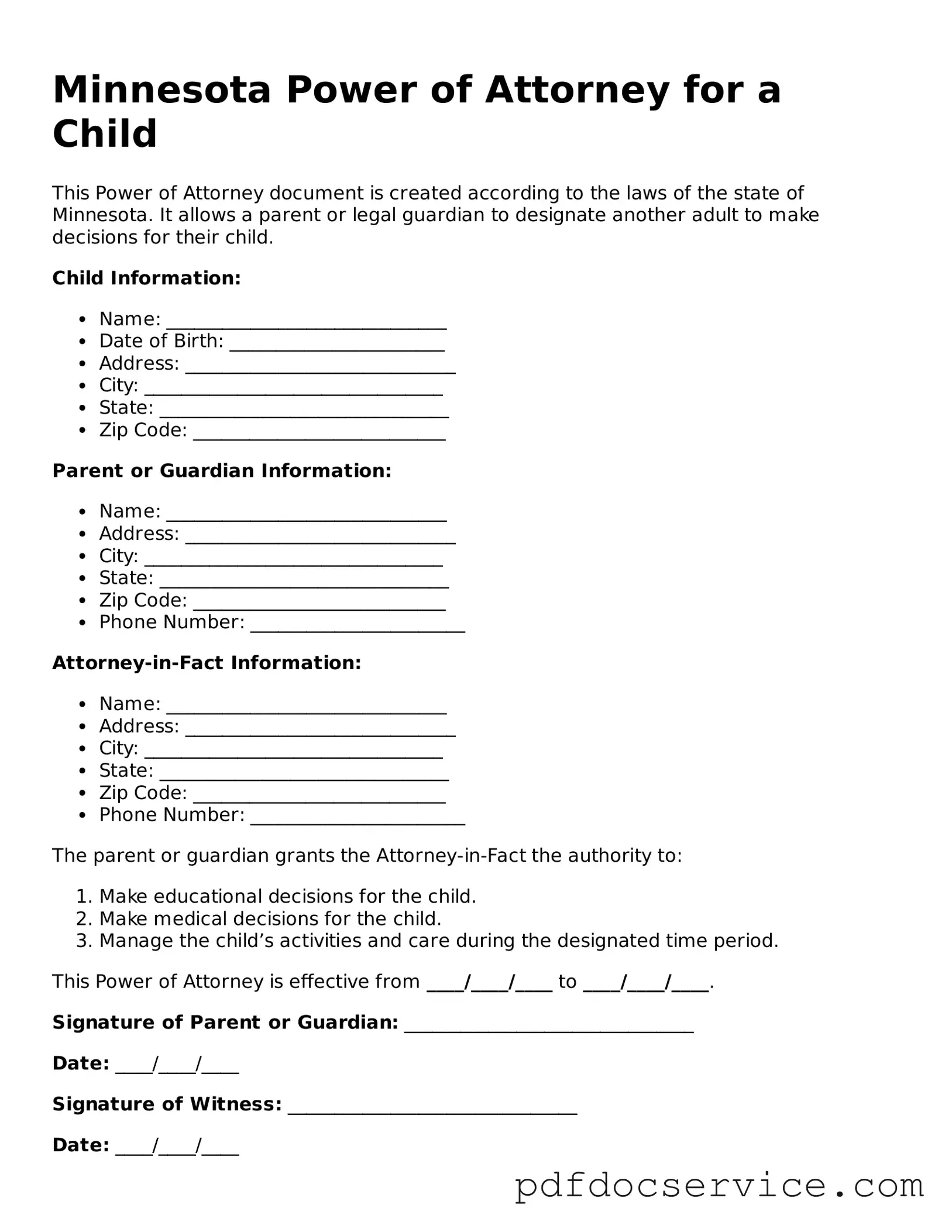What is a Minnesota Power of Attorney for a Child?
The Minnesota Power of Attorney for a Child is a legal document that allows a parent or legal guardian to designate another individual to make decisions on behalf of their child. This may include decisions related to education, health care, and general welfare. The form is particularly useful in situations where the parent or guardian is unavailable, such as during travel or extended absences.
Any responsible adult can be appointed as an agent. This may include relatives, family friends, or other trusted individuals. It is important to choose someone who is willing and able to take on the responsibilities associated with caring for the child.
How long is the Power of Attorney valid?
The Power of Attorney for a Child remains in effect until the specified expiration date, if one is provided. If no expiration date is indicated, the authority generally continues until the parent or guardian revokes it or until the child reaches the age of majority, which is 18 years old in Minnesota.
What decisions can the agent make?
The agent can make a variety of decisions regarding the child's care. These may include:
-
Health care decisions, including medical treatment and consent for procedures
-
Educational decisions, such as enrollment in school or special education services
-
General welfare decisions, including daily care and supervision
However, the agent cannot make decisions that require parental consent, such as adoption or marriage.
Yes, the Minnesota Power of Attorney for a Child must be signed in front of a notary public to be legally binding. This ensures that the document is valid and that the signatures are authentic. It is advisable to keep a copy of the notarized document for your records.
Can I revoke the Power of Attorney once it is established?
Yes, the parent or legal guardian can revoke the Power of Attorney at any time. To do this, a written notice of revocation should be provided to the agent and any relevant parties. It is recommended to keep a record of the revocation to avoid any confusion in the future.
The form can typically be obtained from various sources, including:
-
Local government offices, such as county clerks
-
Legal aid organizations
-
Online legal resources and templates
Ensure that you are using the most current version of the form to comply with Minnesota laws.
